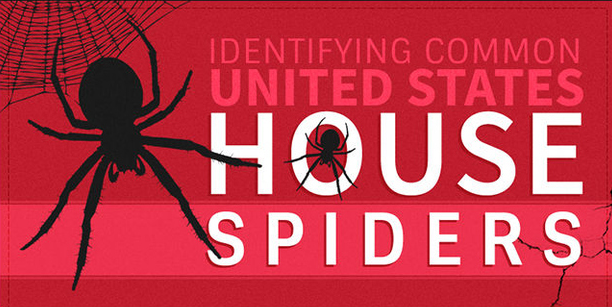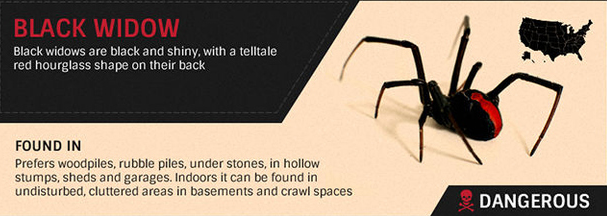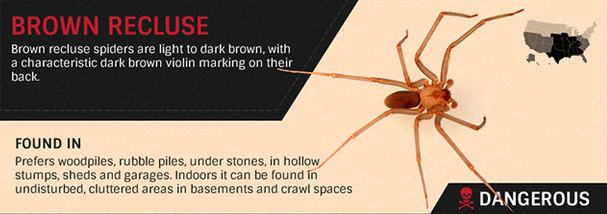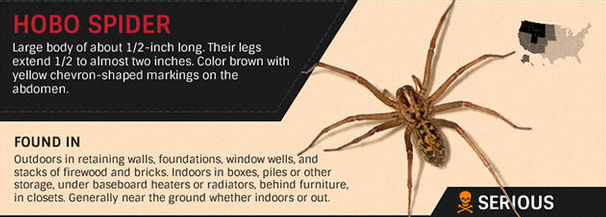North America is fortunate that venomous creatures and encounters with them are fairly rare occurrences, but they do happen and can happen if you are not careful.
Every once in a while you even hear about someone discovering a Black Widow among fruit they bought at the supermarket.
Here is what you need to know to avoid the three most common venomous spiders.

Black Widows
Black widow spiders are found throughout North America, but are most common in the southern and western areas of the United States. They are identified by the pattern of red coloration on the underside of their abdomen. They are usually found in workplaces containing undisturbed areas such as woodpiles, under eaves, fences, and other areas where debris has accumulated. They may also be found living in outdoor toilets where flies are plentiful.
Black widow spiders build webs between objects, and bites usually occur when humans come into direct contact with these webs. A bite from a black widow can be distinguished from other insect bites by the two puncture marks it makes in the skin. The venom is a neurotoxin that produces pain at the bite area and then spreads to the chest, abdomen, or the entire body.
Brown Recluse Spiders
The brown recluse spider, also known as the violin spider, is most commonly found in the Midwestern and southern states of the United States. It is brown in color with a characteristic dark violin-shaped (or fiddle-shaped) marking on its head and has six equal-sized eyes (most spiders have eight eyes). Brown recluse spiders are usually found in workplaces with secluded, dry, sheltered areas such as underneath structures logs, or in piles of rocks or leaves. If a brown recluse spider wanders indoors, they may be found in dark closets, shoes, or attics.
The brown recluse spider cannot bite humans without some form of counter pressure, for example, through unintentional contact that traps the spider against the skin. Bites may cause a stinging sensation with localized pain. A small white blister usually develops at the site of the bite. The venom of a brown recluse can cause a severe lesion by destroying skin tissue (skin necrosis). This skin lesion will require professional medical attention.
Hobo Spiders
The hobo spider is in the Pacific Northwest. It is large and brown with a distinct pattern of yellow markings on its abdomen. Unlike many other similar looking spiders, hobo spiders do not have dark bands on their legs. They may be found in outdoor workplaces with retaining walls, and in foundations, window wells, and stacks of firewood and bricks. Indoors, they can nest between boxes or other storage items, on window sills, under baseboard heaters or radiators, behind furniture, and in closets.
Hobo spiders do not climb like most spiders but are fast runners. These spiders are more likely to attack if provoked or threatened. The bite of a hobo spider may go unnoticed; however a moderate to severe, slow-healing wound will develop.
The key to avoiding venomous spiders is to be aware of their existence and where they likely could be hiding or nesting, but you should not be paranoid over them.
Original Image Source: AB Pest Control
Your chances of an encounter are quite low, but are all but eliminated if you use standard precautionary measures.
For more information on venomous spiders, symptoms of a bite and medical procedures you must take if bitten, please visit the CDC.




The key is to stay the hell away from all of them. Every spider I see can kill me, at least that’s my mentality lol
@[1007953748:2048:Joe Barillaro]
@[100002350522011:2048:Bubba Miller]